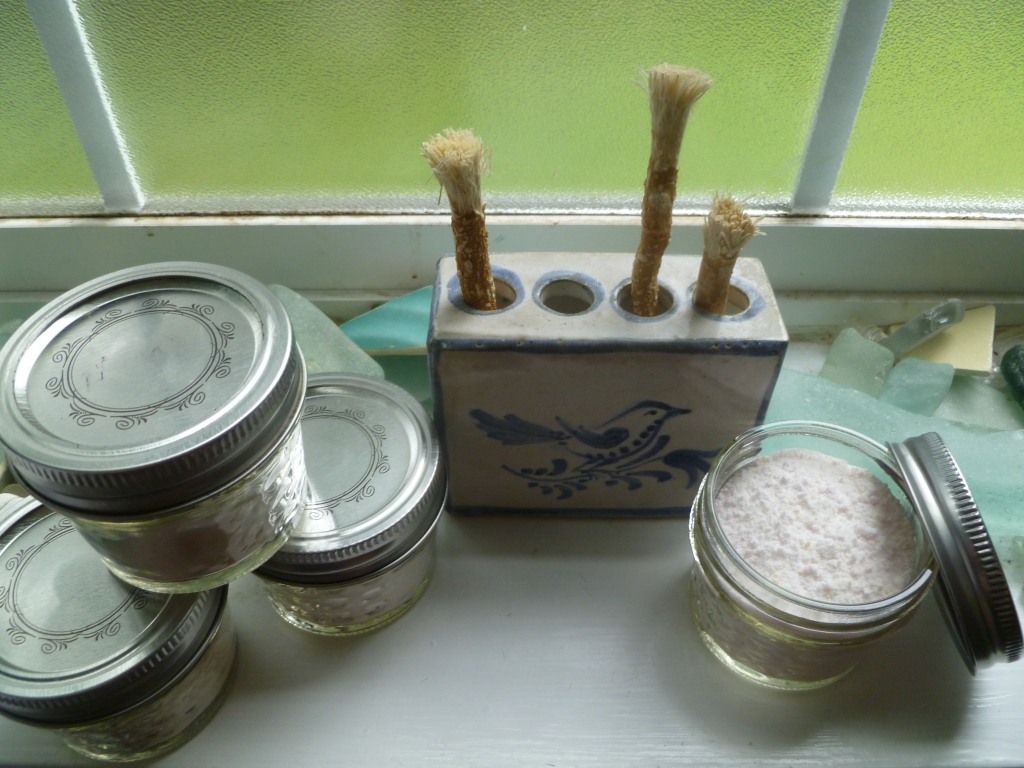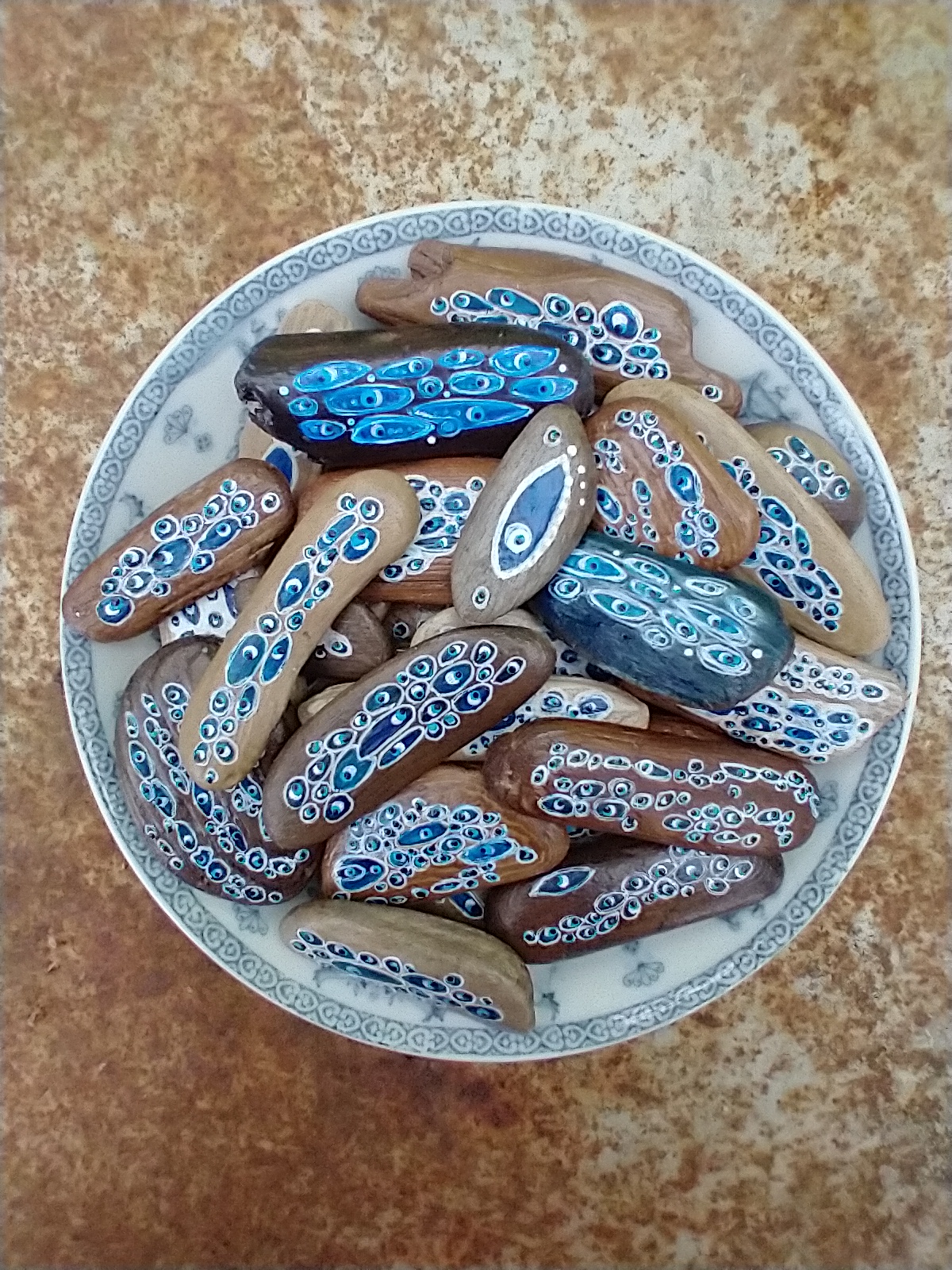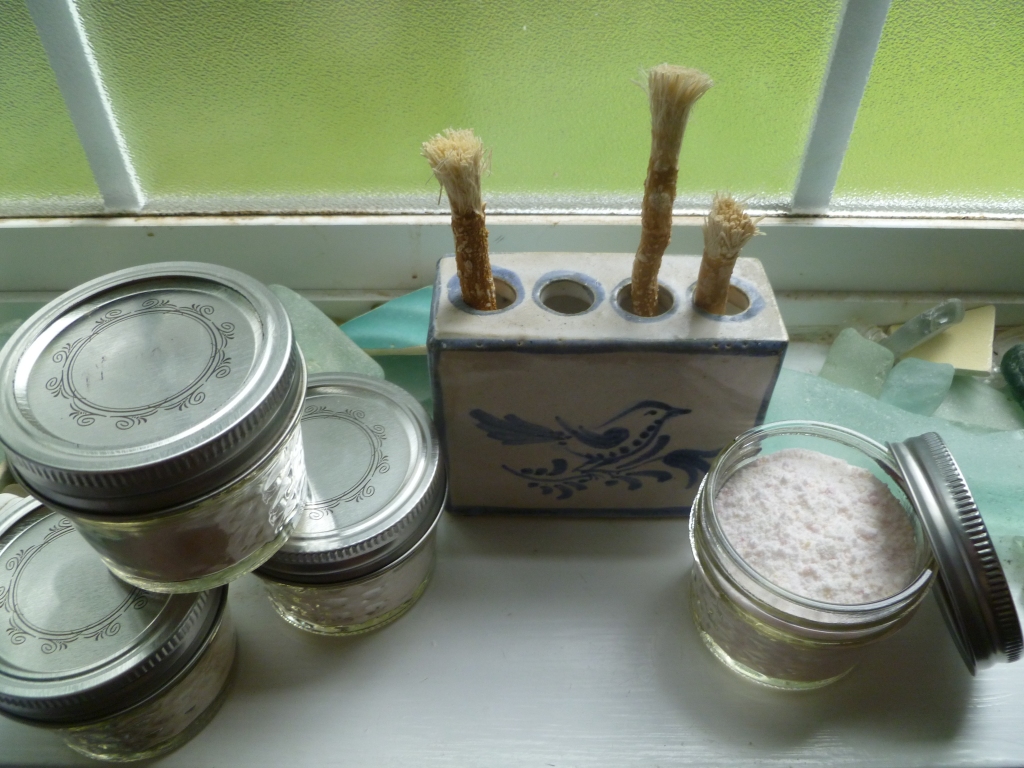
Let’s talk teeth! I was a dental assistant for about a year in my youth, and I carry a bit of residual obsession with teeth and dental health with me today. That collided with my newer obsession with living without new plastic whenever possible and produced some changes around my home. As always, I’m not in any way affiliated with or profiting from any of the solutions I’m recommending here. These are my personal picks, not influenced by any cash, freebies, or other perks.
TOOTHPASTE
We make our own zero waste toothpaste. To be exact, it’s tooth powder, not paste, but “zero waste tooth powder” doesn’t rhyme and roll of the tongue the same way. Whatever you call it, it’s easy to make, easy to use, and it works. My kids like this so much, they sneak pinches of it during the day between brushing.
If you’ve ever brushed your teeth with straight baking powder, you may recoil in horror when you first read the ingredient list below. If you haven’t, take my word for it, plain baking soda works as toothpaste, but it can be a harsh and unpleasant experience for the rest of your mouth. Take a deep breath and trust in this: The salt mellows the mouth impact of straight baking soda without detracting from the scouring power (in fact, the salt adds its own cleaning oomph).
We’ve used xylitol and stevia to sweeten our toothpaste. Xylitol is my favorite because of the evidence that it can reverse tooth decay as well as inhibit it. Stevia doesn’t seem to pack the same cavity-fighting power, but at least it does not promote tooth decay. Many grocery and natural food stores with bulk bins carry both – Bring your own small jar to carry yours home for zero waste shopping. You can also find them online, but that usually involves plastic packaging.
Zero Waste Toothpaste
- 1 cup baking soda plus a bit extra, as needed
- 2 1/2 teaspoons finely ground sea salt, to taste
- 1/4 teaspoon Peppermint oil, or other flavoring oils of your choice
- Powdered xylitol or stevia to taste.
- Lidded jar or jars to store the finished toothpaste in.
- Put 1 cup of baking soda into a small mixing bowl, then add the fine sea salt and mix well.
- Add peppermint oil, or the extracts/oils of your choice (I like mint and lemon combined, or mint and orange, or anise by itself). Mix well.
- Add powdered xylitol or stevia to taste. We’re still working our way through a small jar of fruit-flavored stevia powder,, and it takes 2 teaspoons of that to get my kids’ desired toothpaste sweetness. Xylitol is less sweet, so you’ll likely need to use more of that.
- Taste and adjust as desired. If you’ve added too much salt, flavoring, or sweetness, add a bit of extra baking soda, taste again, and make any desired changes.
- Store finished toothpaste/powder in a small jar with a tight lid. This makes enough to fill 4 4-ounce Mason jelly jars each about 3/4 full.
How to use your zero waste toothpaste: When it’s time to brush your teeth, get your toothbrush a bit damp with fresh water from the sink (shake off any big droplets), then dip the brush into the toothpaste and get busy cleaning your teeth and gums.
Our friends at Pioneering the Simple Life store theirs in a shaker and dust their brushes, but we like a nice, thick coating on ours. Because this isn’t exactly a germ-free delivery method, we each have our own wee jar of toothpaste to dip our brushes into.
TOOTHBRUSHES
We just recently started brushing with miswak sticks, which we love. Although I did not believe it until I tried it for myself, one brushing with a fresh miswak stick left my mouth feeling as clean as if I’d just spent over an hour at the dental hygienist. It was such an unexpected and exciting development, I went around for days wanting to talk about nothing else. Skeptical? This article has a great roundup of information.
We also have two Sonicare handles with a separate brush head for each of us, and we take turns using those in combination with chewing on our individual miswaks. The Sonicare system is absolutely not plastic free, but we’ve had ours for years and it makes more sense to me to keep it in use than send it to the landfill.
While Philips, the company that manufactures the Sonicare system, says on their website that “At Philips we utilize our EcoDesign process to incorporate design-for-recycling and end-of-life management into all our products.”, they follow that with a statement that passes responsibility for reuse and recycling on to individuals and their local municipalities. When I called Philips just now to ask about reuse and recycling options, they couldn’t tell me what number the plastic base, handles, and brush heads are made out of; they’ve promised to email this information to me, so I’ll share that when I get it. Regardless of municipal recycling options, there’s no getting around the fact that each Sonicare component is made of virgin plastic, and is therefore part of an open and toxic material loop.
This is another of those areas where I’m conflicted – I want clean teeth, and I want my children to grow up with as few cavities as possible (an uphill battle given the chalk-like teeth they’ve inherited from one side of their family) and I want to divest from the plastic economy. When these things all intersect and seem to be in conflict, I take a deep breath, remind myself to look at the big picture, and cut myself some slack.
We’ll keep using our zero waste toothpaste on our Sonicare brushes until the batteries finally give up, buying replacement heads as necessary and stockpiling the old ones for reuse around the house. With luck, when the handles just won’t hold a charge any more, there will be a petroleum plastic-free version we can upgrade to.
This makes me love our miswak sticks even more – They do come wrapped in plastic to keep the natural juices in each stick from drying out, but that seems like an easier packaging challenge to solve; at least the core product is a completely natural stick from a living tree, a product that comes with its own cradle-to-cradle design.
Don’t just toss out your used plastic toothbrushes – Hang onto them and check out the suggestions at Trash Backwards (and add your own) for the many ways you can reuse old toothbrushes to divert them from that one-way trip to the landfill.
Please let me know if you’ve come up with other zero waste, plastic-free dental solutions. I’d love to know what’s working for you!

